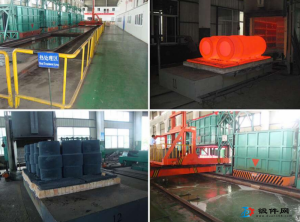Heat treatment is one of the indispensable and important processes in the manufacturing process of forging molds, which plays a crucial role in the lifespan of the molds. According to the requirements of specific forging processes, targeted heat treatment processes are developed to match the strength (hardness) and toughness of the mold appropriately, ensure reasonable and uniform hardness on the surface of the mold body and cavity, achieve fine and uniform grain size, prevent oxidation and decarburization, reduce residual stress and deformation, and improve the life and stability of the mold. The adoption of new heat treatment processes can tap into the potential of materials and significantly improve the lifespan of molds at a small cost. For example, low temperature quenching is used for high carbon cold forging dies to obtain more Flat noodles martensite, which can improve toughness, reduce die deformation and quenching cracks, and thus improve die life; Vacuum heat treatment has the advantages of no oxidation, decarburization, degassing, uniform heating, and small deformation, which is also beneficial for improving the service life of molds.

The effect of surface treatment on strengthening the surface of the mold cavity and improving the mold life is not only significant, but also cost-effective. It is a twice the result with half the effort strengthening mold process method and the preferred process for improving mold economy. The surface treatment methods for mold cavity strengthening that have been applied and have application potential include surface deformation (shot peening, extrusion, rolling, etc.) strengthening, surface phase transformation strengthening, surface diffusion strengthening, implantation strengthening and other surface modification technologies, thin film technologies such as physical vapor deposition and chemical vapor deposition, as well as coating technologies such as electrochemical deposition (electroplating) and thermal spraying. The characteristics and application status of these processes will also be discussed in subsequent chapters of this book.
